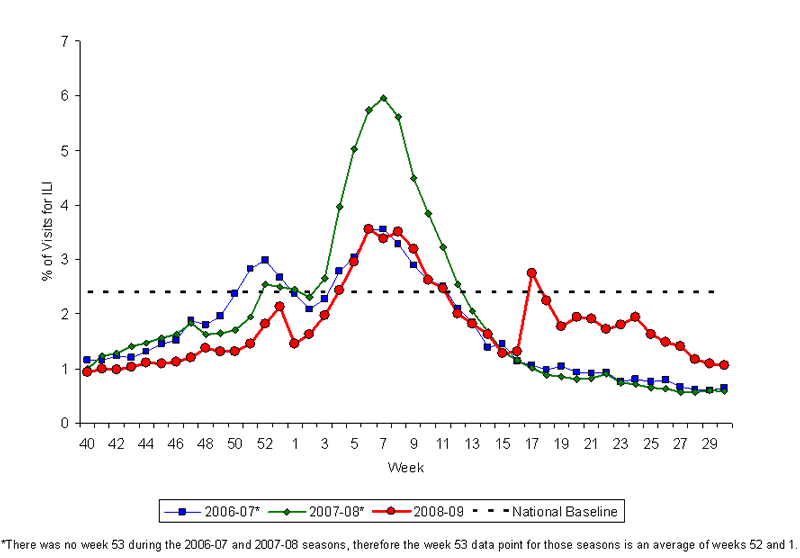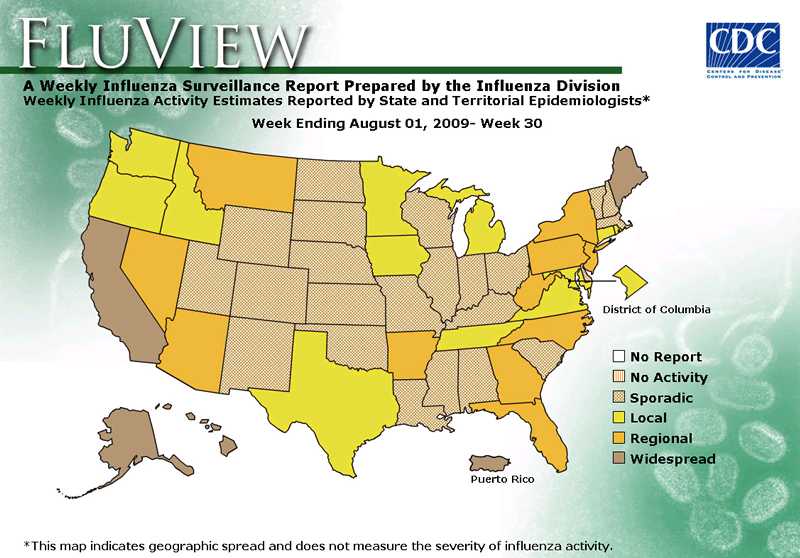Content on this page was developed during the 2009-2010 H1N1 pandemic and has not been updated.
- The H1N1 virus that caused that pandemic is now a regular human flu virus and continues to circulate seasonally worldwide.
- The English language content on this website is being archived for historic and reference purposes only.
- For current, updated information on seasonal flu, including information about H1N1, see the CDC Seasonal Flu website.
Novel H1N1 Flu Situation Update
August 14, 2009, 11:00 AM ET
Map: Weekly Influenza Activity Estimates Reported by State and Territorial Epidemiologists
(Activity levels indicate geographic spread of both seasonal and novel influenza A [H1N1] viruses)
(Posted August 7, 2009, 4:00 PM ET, for Week Ending August 1, 2009)
For more details about the data in the map above, see the FluView Surveillance Report for the week ending August 1, 2009. For information about how this map is updated, see Questions & Answers About CDC's Online Reporting.
Percentage of Visits for Influenza-like Illness (ILI) Reported by the U.S. Outpatient Influenza-like Illness Surveillance Network (ILINet), National Summary 2008-2009 and Previous Two Seasons
(Posted August 7, 2009, 4:00 PM ET, for Week Ending August 1, 2009)

Reporting States and Territories* |
Hospitalized Cases |
Deaths |
|
|---|---|---|---|
| 51 | 7,511 | 477 | |
*Includes the District of Columbia, American Samoa, Guam, Puerto Rico and the U.S. Virgin Islands. The number of hospitalized novel H1N1 cases and deaths presented in this table are an aggregate CDC discontinued reporting of individual confirmed and probable cases of novel H1N1 infection on International Human Cases of H1N1 Flu Infection |
|||



